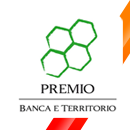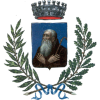The city of Paola is situated on the Tirrenic coast not for from Cosenza. The cities name has most uncertain origins. One theory, written in some seventeenth century manuscripts, is that the name derived from the arrival of an antique Greek colony from Patikos, from which was deducted the similarity to the name Paola.
The second theory regards the Roman conquest of Calabria: a console named Lucio Emilio Paolo, made his home on the territory of the city.
The actual theory is that the name Paola arrived from Pabula, latin for pasture. The territory, rich in vegetation, was used mostly as pasture for animals.
In the year 395 a.d, following a split in the Roman Empire, Paola became property of Bizanzio.
In 1050 Roberto d'Altavilla arrived in Calabria, known as Il Guiscardo, joined by his brother Ruggiero in 1057.
The city of Paola can thank the Normans for the building of the Castle of Paola around 1110 a.d. This fortress was build using 'malta and tufo', in a strategic position overlooking the city it was used to defend monks and citizens from the soldiers passing across the Paolan territory.
During the reign of Federico II of Sweden Calabria reached one of its most prosperous moments. Even Paola benefitted from this prosperous period.
With the arrival of the Aragon's, Paola was given the status of City and was declared so by Ferdinando II of Aragona.
Today Paola is remembered above all for the famous Sanctuary of San Francesco di Paola. Other places of interest are: the Abbey, San Miceli (church with paleochristian paintings), the Roman ruins, Scorza Palace and the monumental fountain of the 'Seven Channels'. The fountain flows at the foot of a large stairway and is work of locals from the first part of the XVI century. The monument opens like a great fan, like the tail of a peacock, symbol of Paola.



